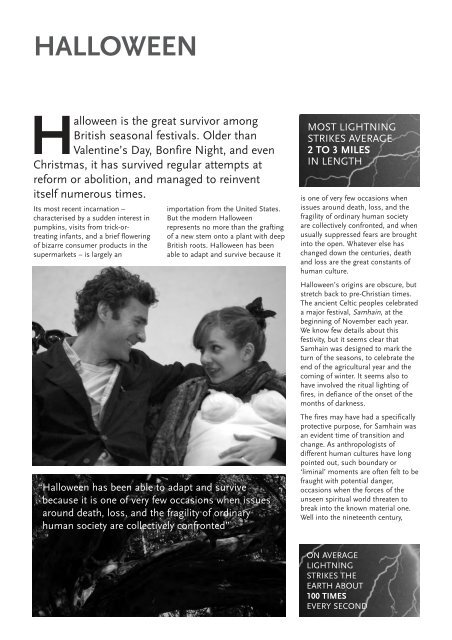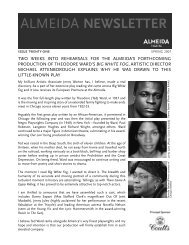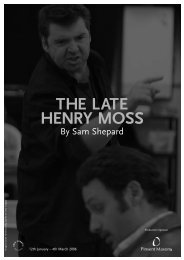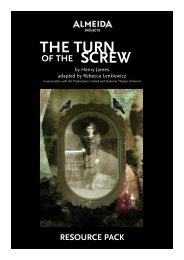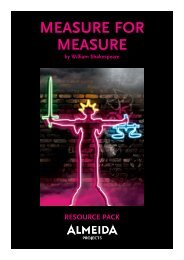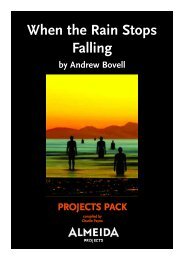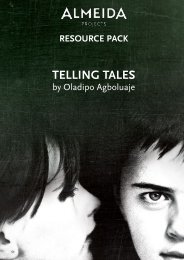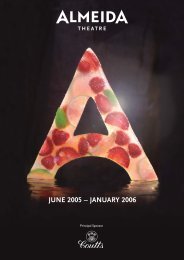The Lightning Play - Almeida Theatre
The Lightning Play - Almeida Theatre
The Lightning Play - Almeida Theatre
You also want an ePaper? Increase the reach of your titles
YUMPU automatically turns print PDFs into web optimized ePapers that Google loves.
HALLOWEEN<br />
alloween is the great survivor among<br />
British seasonal festivals. Older than<br />
Valentine’s Day, Bonfire Night, and even<br />
Christmas, it has survived regular attempts at<br />
reform or abolition, and managed to reinvent<br />
itself numerous times.<br />
Its most recent incarnation –<br />
characterised by a sudden interest in<br />
pumpkins, visits from trick-ortreating<br />
infants, and a brief flowering<br />
of bizarre consumer products in the<br />
supermarkets – is largely an<br />
importation from the United States.<br />
But the modern Halloween<br />
represents no more than the grafting<br />
of a new stem onto a plant with deep<br />
British roots. Halloween has been<br />
able to adapt and survive because it<br />
“Halloween has been able to adapt and survive<br />
because it is one of very few occasions when issues<br />
around death, loss, and the fragility of ordinary<br />
human society are collectively confronted”<br />
MOST LIGHTNING<br />
STRIKES AVERAGE<br />
2 TO 3 MILES<br />
IN LENGTH<br />
is one of very few occasions when<br />
issues around death, loss, and the<br />
fragility of ordinary human society<br />
are collectively confronted, and when<br />
usually suppressed fears are brought<br />
into the open. Whatever else has<br />
changed down the centuries, death<br />
and loss are the great constants of<br />
human culture.<br />
Halloween’s origins are obscure, but<br />
stretch back to pre-Christian times.<br />
<strong>The</strong> ancient Celtic peoples celebrated<br />
a major festival, Samhain, at the<br />
beginning of November each year.<br />
We know few details about this<br />
festivity, but it seems clear that<br />
Samhain was designed to mark the<br />
turn of the seasons, to celebrate the<br />
end of the agricultural year and the<br />
coming of winter. It seems also to<br />
have involved the ritual lighting of<br />
fires, in defiance of the onset of the<br />
months of darkness.<br />
<strong>The</strong> fires may have had a specifically<br />
protective purpose, for Samhain was<br />
an evident time of transition and<br />
change. As anthropologists of<br />
different human cultures have long<br />
pointed out, such boundary or<br />
‘liminal’ moments are often felt to be<br />
fraught with potential danger,<br />
occasions when the forces of the<br />
unseen spiritual world threaten to<br />
break into the known material one.<br />
Well into the nineteenth century,<br />
ON AVERAGE<br />
LIGHTNING<br />
STRIKES THE<br />
EARTH ABOUT<br />
100 TIMES<br />
EVERY SECOND


